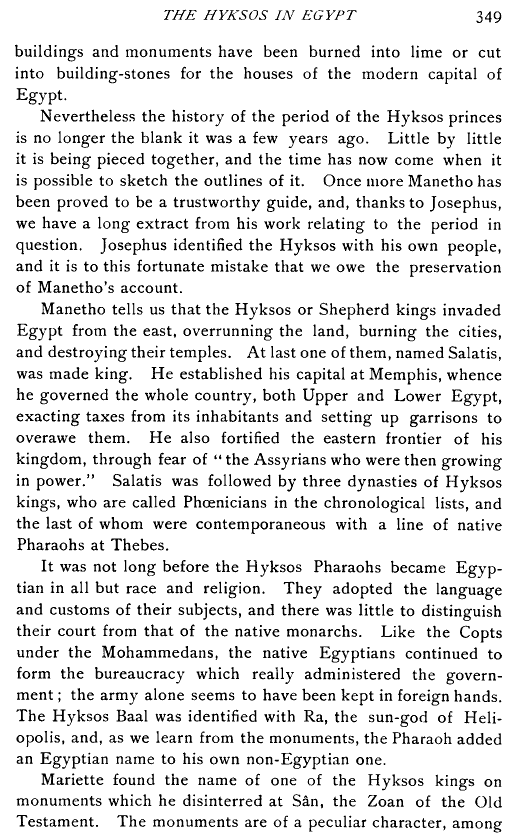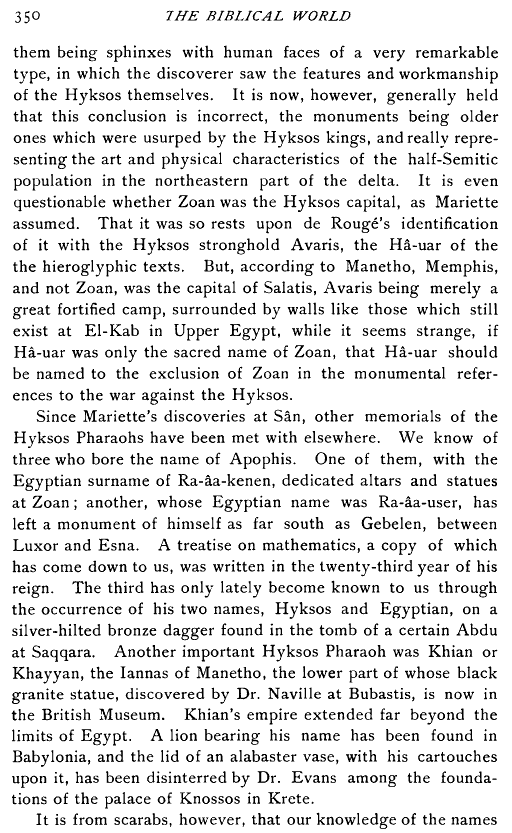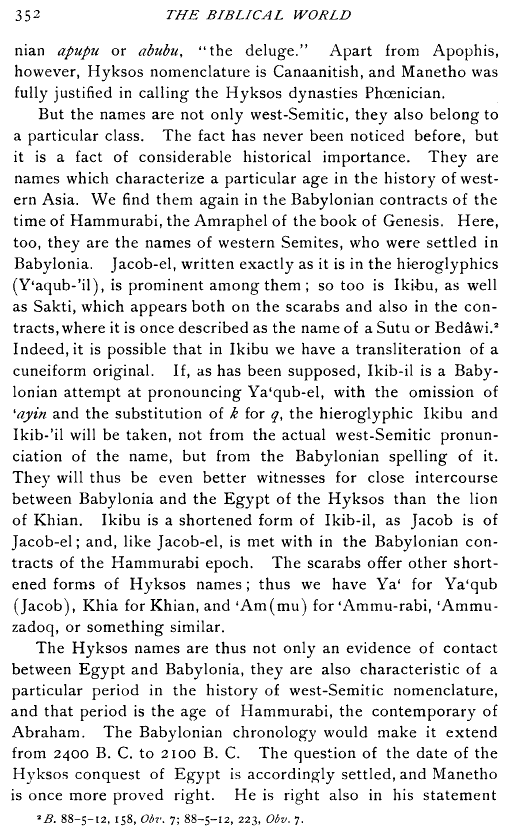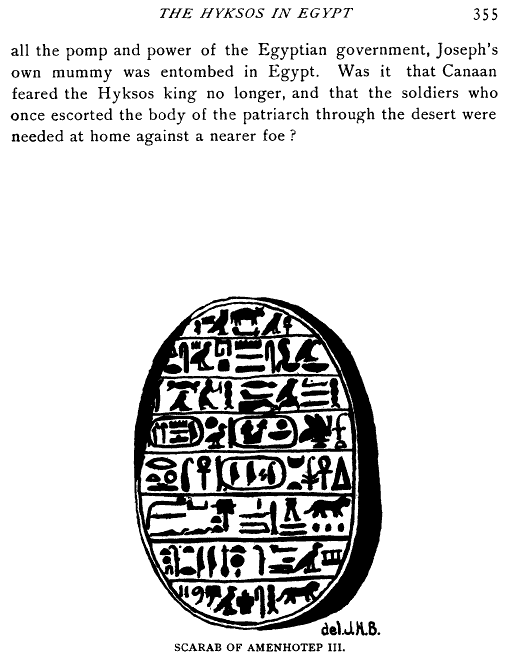|
Other Archaeological Sites / The Neolithic of the Levant (500 Page Book Online)
The Hyksos in Egypt by Archibald Sayce in The Biblical World https://ancientneareast.tripod.com/PDF/The_Hyksos_in_Egypt_Sayce.pdf Updated September 13th 2019 For the student of the Old Testament the period of the Hyksos has a special interest. It was while they were reigning that the patriarchs entered Egypt and that the Israelites settled in Goshen. Joseph was the viceroy of a Hyksos Pharaoh and received an Egyptian name in addition to his own west-Semitic one. Before he died however the war of independence must have broken out which ended in the expulsion of the foreigner and the victory of the princes of Thebes. ... it is not easy to distinguish between western Semites and southern Arabians in the second millennium before our era. Their names have a common stamp and it is still a question whether the dynasty to which Hammurabi belonged came from Canaan or Arabia. In any case it is probable that the same wave of migration which brought the dynasty into Babylonia also carried the Hyksos invaders into Egypt. With the weakening of its empire in the West came the strengthening of the Hyksos kings. Hyksos influence took the place of Babylonian influence in Canaan and eventually Khian made his power felt even in Babylonia. But this must have been after the fall of the dynasty of Hammurabi ... Seuserenre Khyan -- Khian or Khayan was a king of the Hyksos Fifteenth dynasty of Egypt. His royal name Seuserenre translates as "The one whom Re has caused to be strong"[1] Khyan bears the titles of an Egyptian king but also the title ruler of the foreign land (heqa-khaset). The later title is the typical designation of the Hyksos rulers [WikiPedia]
Josephus himself wished to demonstrate the great antiquity of the Jews and thus identified the Hyksos with the Hebrews of the Bible ... In his Against Apion the first-century AD historian debates the synchronism between the Biblical account of the Exodus of the Israelites from Egypt and two Exodus-like events that the Egyptian historian Manetho (circa 300 BC) apparently mentions. It is difficult to distinguish between what Manetho himself recounted and how Josephus or Apion interpret him. Josephus identifies the Israelite Exodus with the first exodus mentioned by Manetho when some 480,000 Hyksos "shepherd kings" (also referred to as just 'shepherds' -- 'kings' and as 'captive shepherds' in his discussion of Manetho) left Egypt for Jerusalem [16]. The mention of "Hyksos" identifies this first exodus with the Hyksos period (16th century BC).
Josephus provides the earliest recorded instance of the much repeated false etymology of the term Hyksos as a Hellenised form of the Egyptian phrase Hekw Shasu meaning "Shepherd Kings". Scholars have only recently shown that the term derives from heqa-khase -- a phrase meaning "rulers of foreign lands" and it almost certainly designated the foreign dynasts rather than an ethnic group [17] [WikiPedia] ...
Go to the Hyksos Page ... |








